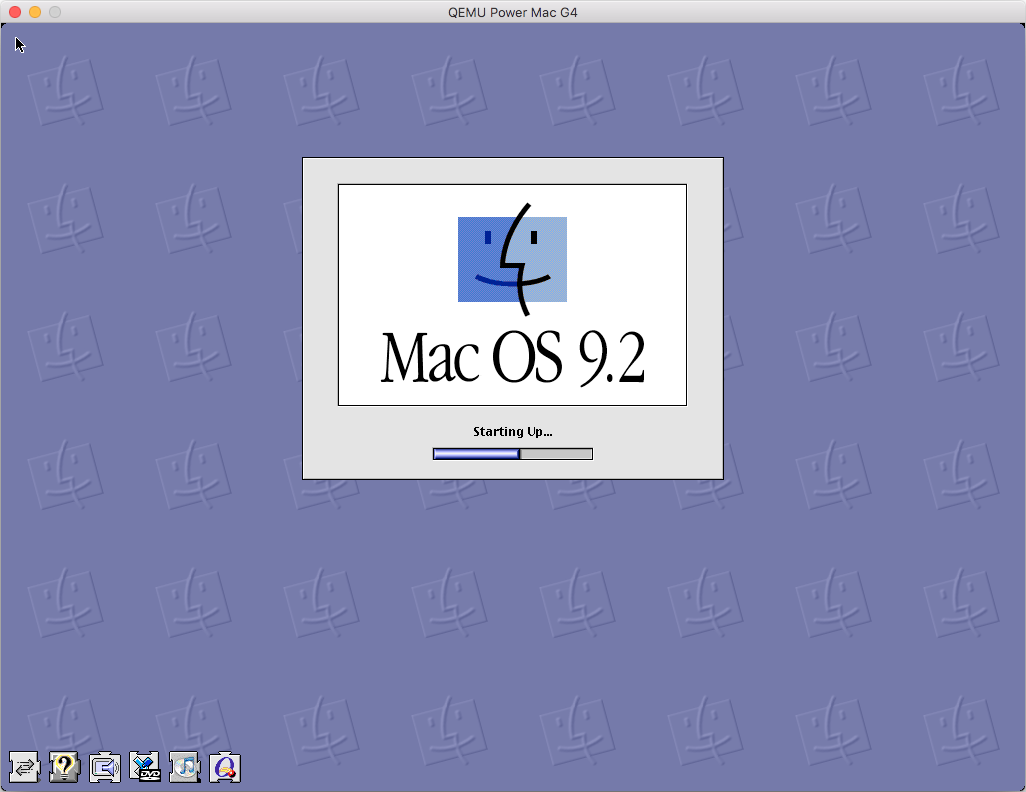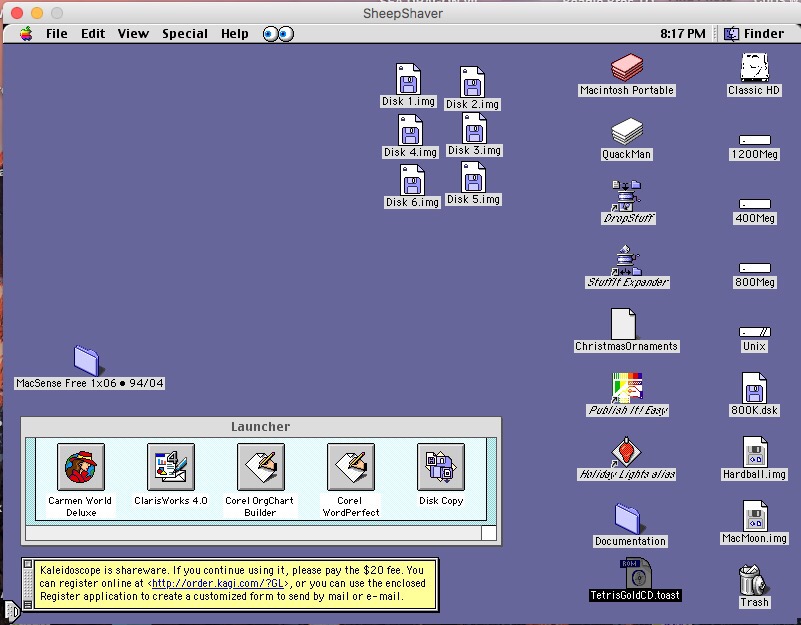

- #Mac os 9 emulator for mac os x#
- #Mac os 9 emulator mac os#
- #Mac os 9 emulator install#
- #Mac os 9 emulator pro#
- #Mac os 9 emulator iso#
The final item, SDL, is required because the default GTK emulation, while faster, has major problems on Windows trying to keep the mouse captured. There are many other useful config switches available for the PowerPC emulation if you need to troubleshoot or tweak. a PowerMAC based Mac with USB support -M mac99,via=pmu.Qemu -system-ppc -cpu "g4" -M mac99, via = pmu -m 512 -hda c:/retro/Mac/MacOS9HD.img -cdrom "c:/retro/Mac/Mac OS 9.2.2 Universal Install.iso" -boot d -g 1024 x768x32 -device usb -kbd -device usb -mouse -sdl Now let’s create an empty hard-drive image file: (Windows won’t let you stuff it into Program Files).
#Mac os 9 emulator mac os#
Creating a machine & installing Mac OS 9įirst off create a new folder to put your machine config into.
#Mac os 9 emulator pro#
They also don’t charge for their Operating Systems instead it’s “free” with the hardware and I still have a MacBook Pro 15” so I won’t feel bad about using it. While Mac OS is copyrighted this image has been up for over 6 years so I like to think Apple are turning a blind eye in that people who want to use their legacy stuff can do so without expecting support from Apple - win-win.
#Mac os 9 emulator iso#
The nice people over at Mac OS 9 Lives have a Mac OS 9.2.2 Universal Installer ISO which is pre-configured and easy to use - it also conveniently includes a few extra tools and apps you’ll need.
#Mac os 9 emulator install#
To install Mac OS 9 we’re going to need a disk image/ISO to install from.
#Mac os 9 emulator for mac os x#
There are “screamer” forks but the only binaries available are for Mac OS X so you’d have to build it yourself and there will probably be a whole lot of hoops to jump through. Please note that Mac sound support is missing here. You could try and build this yourself but Stefan Weil has you covered for pre-built QEMU Windows binaries This is a shame as although I love the command-line for its scriptability when it comes to exploring valid combinations of options the command-line is mostly awful (the IBM AS/400 command-line and prompting system excluded). The only “up to date” one I found - QtEmu - only supports configuring x86 virtual machines. There is no GUI however and the third party ones that exist mostly seem to be from 10 to 2 years out of date and many don’t support Windows at all. With such a wide variety of options and settings available you can imagine it will require some digging through the user interface and you’d be wrong. It’s an open-source emulator that unlike regular virtualization tools is quite capable of emulating completely different CPU architectures from ARM through to MIPS, PowerPC, RISC-V, Sparc and even IBM’s big s390x z/Architecture. sit ( StuffIt Expander) or only work with later Mac OS versions. Additionally some third-party fonts are distributed in.

This is a shame for me as that’s where the interface started diverging by adding color and some more interesting fonts. While James Friend’s PCE.js puts System 6 and System 7 at your fingertips when it comes to later 7.5, 8 or 9 the site doesn’t have you covered as PCE doesn’t support PowerPC emulation (it handles Motorola 68000 and Intel 8086 processors). One limitation I’ve run into is digging into old Macintosh fonts.

This content has been archived, and is no longer maintained by Indiana University.


 0 kommentar(er)
0 kommentar(er)
